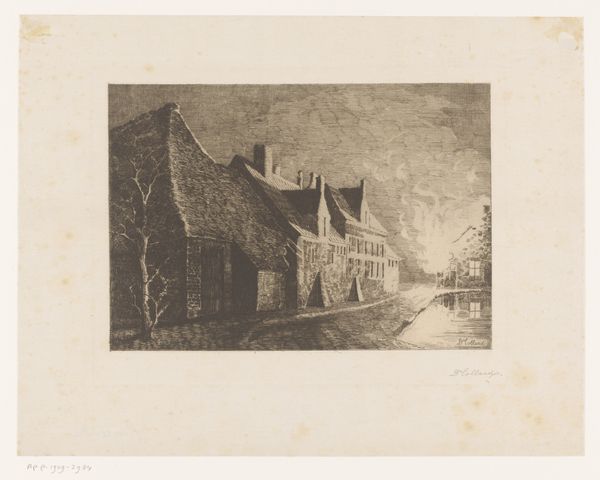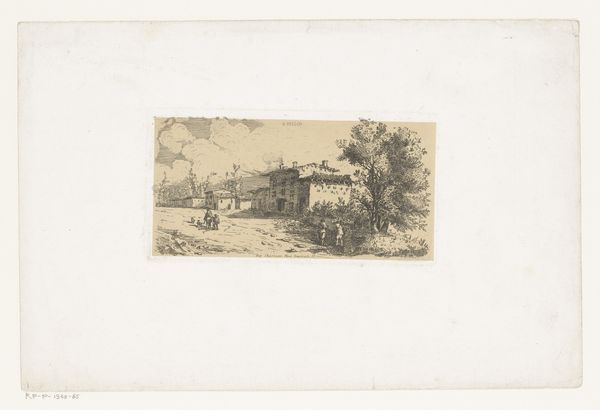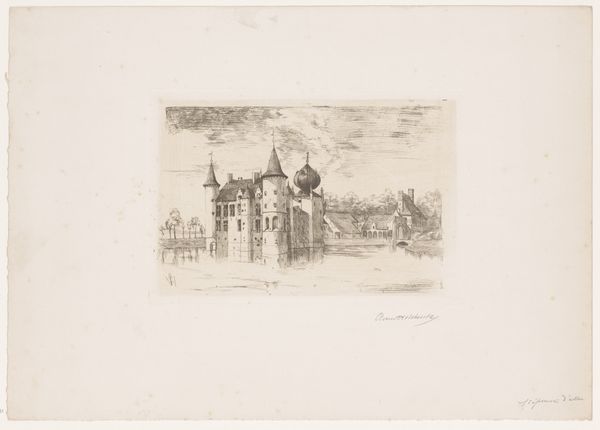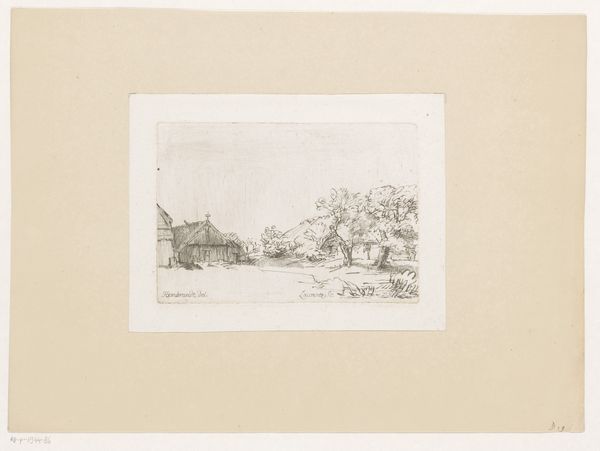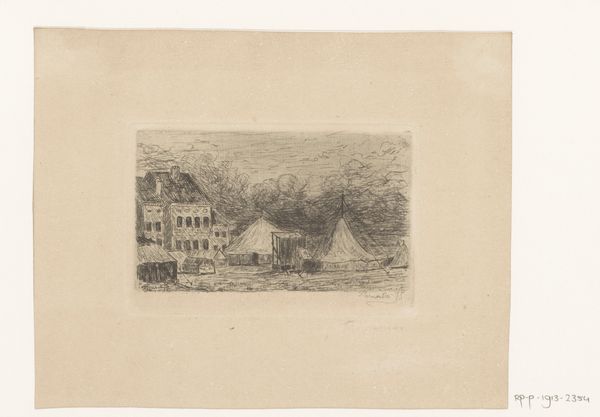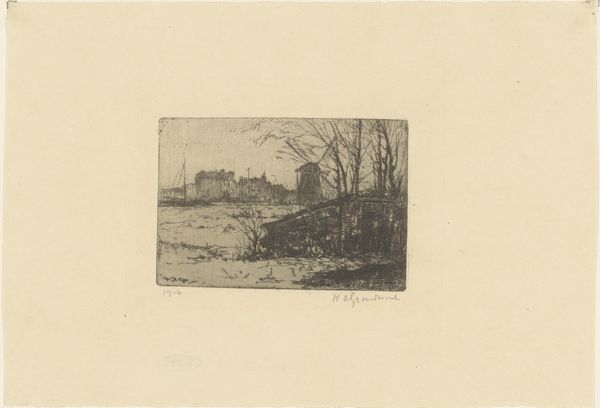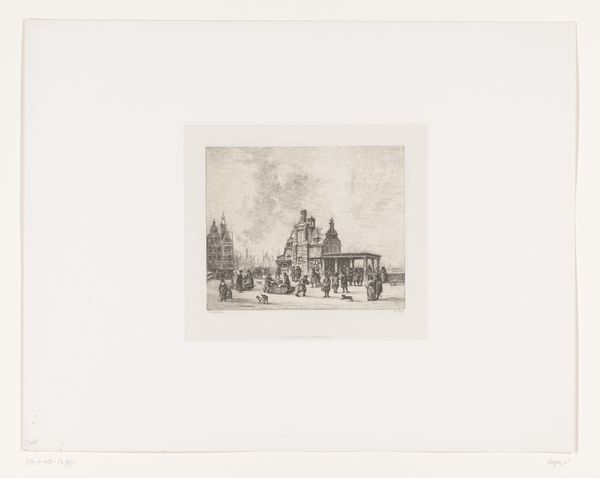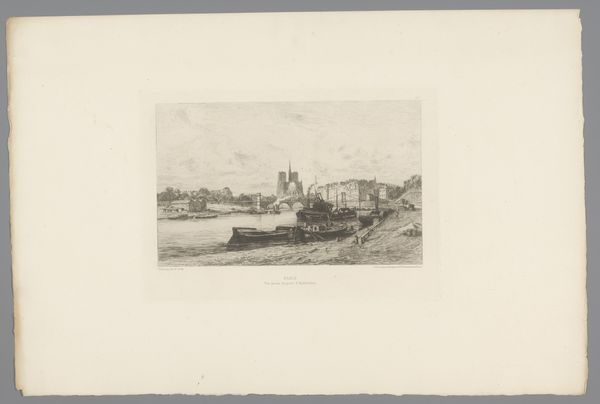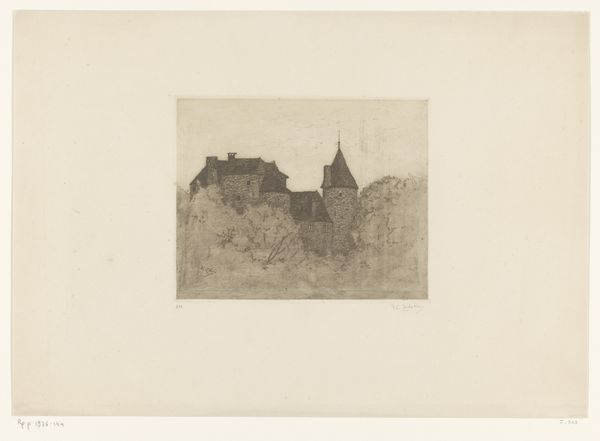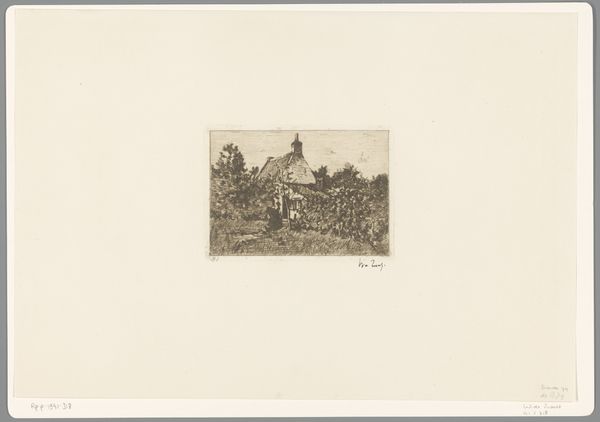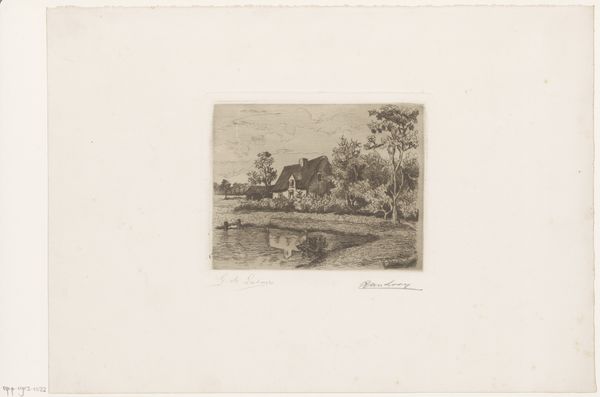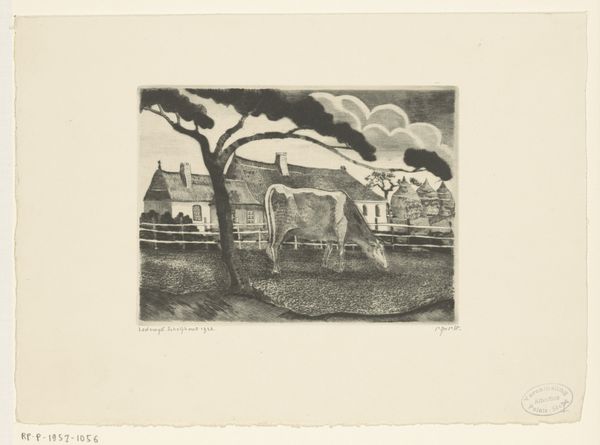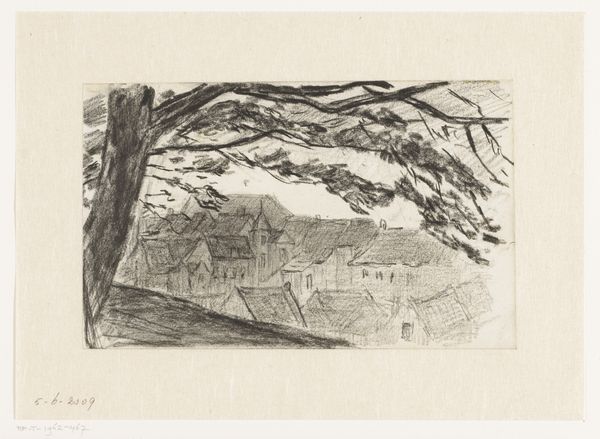
print, etching
#
narrative-art
# print
#
impressionism
#
etching
#
landscape
#
line
Dimensions: height 282 mm, width 383 mm
Copyright: Rijks Museum: Open Domain
Editor: So, this is James Ensor's "Kermis bij een molen," from around 1889. It's an etching, a print, and it feels so… fragile. All those delicate lines. I'm drawn to the scene of revelry, but what catches your eye? What story do you think it tells? Curator: This etching gives us a fascinating window into the late 19th-century cultural landscape. Ensor often used kermesses, or fairs, as settings in his work. Considering the context of increasing urbanization and social anxieties of the period, how might we interpret this particular scene of celebration? Do you see any conflicting elements at play? Editor: Conflicting elements? Hmm… well, there's the celebratory crowd, but the setting itself, especially that stark windmill, almost seems imposing. Like it’s watching over the fun with a critical eye. Curator: Exactly. The windmill, a symbol of traditional life and labor, looms over the boisterous kermis. This juxtaposition is key. Think about the societal norms of the time and Ensor's position as an artist pushing boundaries. Do you see any echoes of those societal tensions reflected here, maybe even a hint of social critique? Editor: Now that you mention it, there’s almost a sense of unease, even amidst the implied joy. Like the figures are going through the motions, and the landscape seems indifferent. It definitely challenges the romantic ideal of rural life I usually associate with landscape art. Curator: Precisely. Ensor wasn't merely depicting a pleasant scene; he was subtly commenting on the changing social fabric, perhaps critiquing the unthinking embrace of festivity as a distraction from deeper societal shifts. Editor: Wow, I didn’t see all that at first. Looking at it now, the composition feels a lot less whimsical. I learned to look for more of these contrasts in art! Curator: And that is how a single image becomes a reflection of the times, shaped by the artist and re-interpreted through the lens of history.
Comments
No comments
Be the first to comment and join the conversation on the ultimate creative platform.
